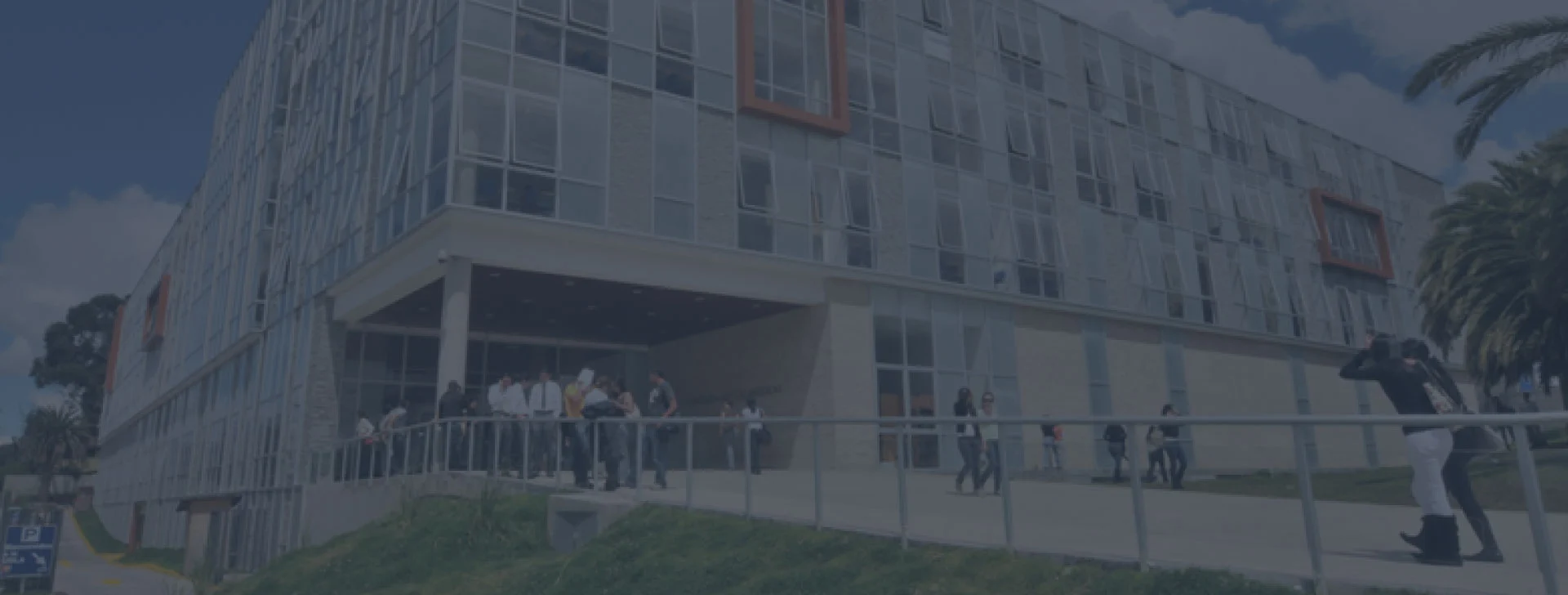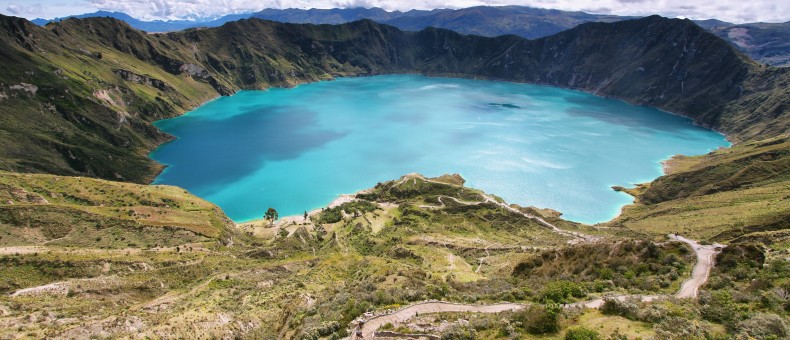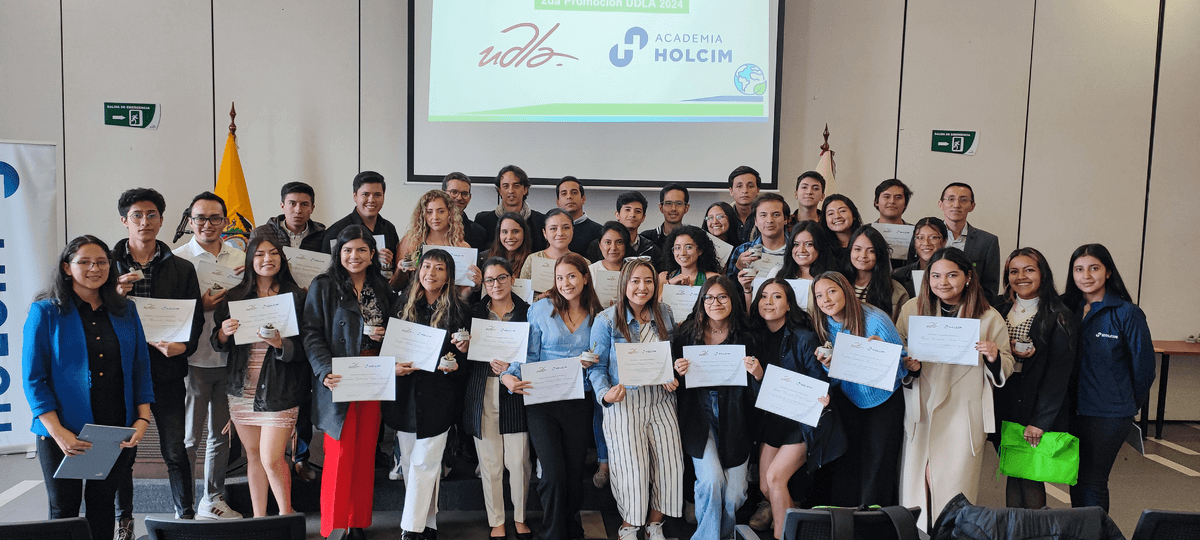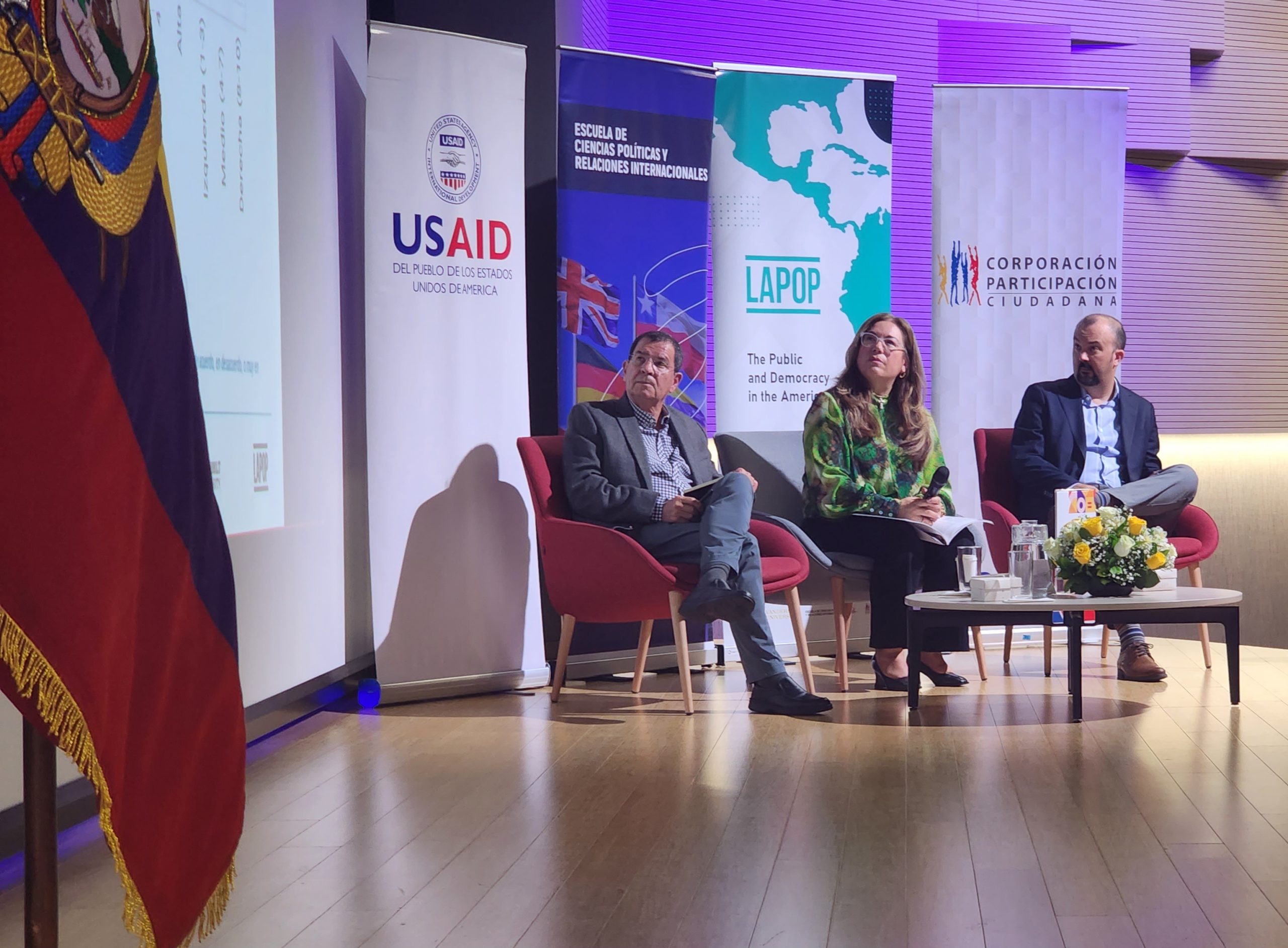James Darl Dodds, estudiante de intercambio de USA escribió este breve reporte sobre su experiencia de viaje al Quilotoa con nuestra Escuela de Hotelería y Turismo.
This past weekend, I had the opportunity to visit one of my most desired destinations in my list of places I want to visit in Ecuador, Quilotoa. Last year, my dad (an American Airlines pilot) visited this place with his fellow crew members during a trip here in Ecuador. Since I have seen his photos, I have wanted to visit Quilotoa.
Along the route, we visited many interesting places. We passed through (in this order) the towns of Alóag, a Tsachila town; Machachi, an important town with a Coca-Cola plant, views of the Miñawi Mountain, and a toll booth; we crossed the Jábombi River, the entrance of Cotopaxi Province and an important place where the Inca Chaskis used to run; the town of Laso which has an important military installment as well as the Moreno Prison; Pujilí, a town in a region where the Sumbawa, Tigua, and Panzaleo groups live; the town of Guangaje; the Tigua Center of Art (named for the group it represents); Quilotoa; and the town of Chilan, where we visited a chocho plant run for and by the Chugchilan people.
My experience during this trip was fully cultural and fun. In the United States, many of the cultures of the indigenous groups are difficult to find or learn about, because in many places, the people and cultures were eliminated. I believe it is an enrichment of the culture (and more human and civil) to conserve and protect indigenous cultures, and in my opinion, it is very sad and a great loss that we have lost so much indigenous culture in the US. I really enjoyed visiting the Tigua art center. It is sad that in much of the world, people only care about European or “Western” art, and much of the more interesting, cultural, and beautiful art of the world (i.e. from outside of the “West”) is lost or forgotten about.
Quilotoa also was very interesting, a beautiful natural wonder. It was very fun to go out in the kayaks on the lake, one of the most important parts of my experience. The hike was difficult in both directions; going down, it was hard because of the possibility of falling (and many people did fall), and the route back up from the lake (at the end) was difficult because we were tired, and the 1.7 km hike up 367 meters was quite difficult. The motivation to get to the top quickly was that there was lunch at the top of the route, because we were all very hungry. I learned many interesting things about the town at the top of Quilotoa, for example, that it is an indigenous community, and all of the companies in this tourist town are indigenous-owned. It was interesting to learn how they resolved the utility problems that they had due to the distance between Quilotoa and other towns.
When we left Quilotoa in the afternoon, we went to a choco plant run by the Chugchilan indigenous group, near the town of the same name. There the worker explained to us how for her, her job is an opportunity to serve her people. To her, it is not a job, but is a service, and it is an important and fun part of her life. I believe that it is very important that one enjoys their job, and when it is seen as a service and an important part of one’s life, it is a very good thing.
Comparing Ecuador and the United States, I believe that there are many similarities and differences in the infrastructure and its problems and situations related to that, the government, and the indigenous groups. The roads here are similar in quality to those in the United States, but in my part of the US, it is a very flat region, so six hours of driving from my city takes you a distance of 600-700 km, while here, because of the mountains and curves, six hours only takes you 300-400 km. I have read that there are problems with indigenous inequality here in Ecuador, but I believe that it is a much better situation than in the US, where my country destroyed much of the culture (and many lives) of the indigenous people. I have enjoyed learning about the indigenous cultures here recently so much, not only during class, but also through the experiences I had during this trip. (Jim Dodds)





